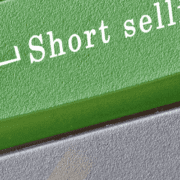The Dollar is Going Up Part II
Meanwhile, the spread between the interest rate and the dividend yield or earnings yield makes an attractive arbitrage. If you are the CFO of a public company and your shares pay a 4% dividend and you can borrow at 2%, it is practically a “no brainer”. The problem is that incurring debt for no productive purpose makes the company more brittle. While the share price could fall for any number of reasons—including falling profits—the debt remains. The problem is exacerbated if the company borrows using short-term bonds. These bonds have to be “rolled” frequently. If they cannot be, then that forces the company to begin selling assets (in this case, likely its own shares) under duress. I have previously written about Cypress Semiconductor and their adventure in this trade. It has not been working out for them.
At the moment, the long equities trade has a momentum of its own. Bubbles are a byproduct of the regime of irredeemable currency. People don’t want to hold falling currency, as I noted above. So they pile into one asset after another, seeking if not a durable store of value then at least a trade that will gain in dollars at a faster rate than the dollar loses its value (without leverage, this is impossible to do with gold).
Funds are borrowing to buy stocks. Even retail investors are borrowing to buy stocks, via margin accounts (though they may not be making money on the spread between the much-higher margin interest rate they pay and the relatively low dividend yield of the stocks they buy).
The long equities trade “works” so long as new traders are entering with fresh dollars. In that sense, it’s like a Ponzi scheme. But, deflationary forces are building in the monetary system—deflation being credit contraction. Debt on every balance sheet in the world is immutable and the demand of the creditor to be repaid is merciless.
Right now, the world stands on a brink. I don’t think this is the final brink, at least in America, but a brink for Japan and Europe and China may be very close too. This week Standard and Poor’s reiterated that the debt of India is one step above junk and has a negative outlook. Everywhere you look in the world, government bonds could potentially collapse. It takes only one missed payment.
Sovereign debtors have long since passed the point where they can pay all of their expenses, much less interest. They depend on their bond markets for constant fresh cash. Therefore when actors in the market refuse to bid on a government’s newly issued bonds, then that government must default. From the perspective of the bondholder, it is not a matter of getting a higher interest rate to compensate for the risk. It is the obviously intractable predicament of the debtor. If anything, a higher interest rate brings about collapse sooner.
I think we will soon see whether Japan is collapsing right now. They may yet have more tricks up their central banking sleeve. They may be able to kick this can down the road another month or another year, I do not know. But when the collapse begins in earnest, it is not hard to predict what will happen.
Every Japanese bank and many other financial institutions around the world will find that they are insolvent. Their debts will not go away without default. Not even their debts denominated in yen. Sure, the yen may be worth less and falling fast, but if you owe yen you need to somehow get yen. The value of their yen-denominated assets will be falling faster. What will these banks and institutions do under this kind of pressure?
They must sell whatever assets they have that can be sold.
If they have exotic derivatives, they can try to sell them. But in illiquid markets, they will take dreadful losses, as the bid-ask spread is wide even in normal times. It will widen up hugely in any crisis. They must sell gold, silver, stocks, and other liquid assets. At the same time, they will obviously not be able to make a bid in such markets. So we will see an urgent need to sell on the bid, combined with a vanishing bid.
While the bid will not vanish in the gold and silver markets (as described earlier), this does not mean that it cannot be pushed lower (not a prediction). There are other forces, also large and powerful, that will tend to be lifting the offer in gold and silver. The point is that few balance sheets in the world (my fund, Monetary Metals, is one) that are kept in gold units. For those few, holding gold poses no risk. All the other balance sheets in the world are in dollars, euros, pounds, yen, etc. For them, holding gold incurs a price risk that may now be intolerable. Holding dollars, euros, pounds, or yen does not.
I hope it is clear in the above discussion, that the problem with holding these currencies is counterparty risk. What will happen if the value of Fed’s assets falls? Its liability—the dollar—will be repudiated. The Fed will try to avoid this. Since they can borrow as much as they want, they could buy the entire bond market if they felt the need. In that case, the bond’s market price will not collapse (obviously) but savers will increasingly refuse to hold dollars. At that point, at the point of the Crack Up Boom described by Mises, only tangible goods will be acceptable. Of those, gold and silver stand out as the monetary commodities.
Gold and silver were first to fall. They may fall further, though this is not certain to at. Other assets including equities and real estate can and will fall as well. No asset is immune from credit contraction. It will begin in earnest when a major sovereign bond market collapses (if not sooner). Right now there are several possible countries where this could happen at any time. We could almost say they are in a race to see which arrives at this sorry destination first.






Keith, I believe I read Mises stated that inflation will generally stop as soon as they quit producing more money.
I like the form of this article, as it covers the subject the way I understand it as well. The balance sheet does have to stand. I suspect the only time the Fed balance sheet would be called into question is if they had to defend the dollar. The banking system has a demand for dollars that could exceed their supply, so it is unlikely the banks are going to demand their interest producing assets back on more than a limited scale. As was mentioned, the treasury bond is the basis for all lending and to my knowledge, most of the credit around the world. Talk of other countries selling the US bonds are exaggerated, in that these instruments allow for access to the international financial markets. If China has a trillion or more in US debt, it would probably shoot its own toes off in destroying them.
Lastly, there is something amiss in this world afloat in liquidity. The gold/silver ratio has climbed above 60. Somewhere there is a sizable credit crunch happening. While the gold market is too massive to corner, supposedly the silver market could easily be cornered and thus would be more immune than thought by many to the shorts. You can’t deliver what isn’t there. The longs in a derivatives market could merely take delivery, as their losses are already set in stone, if the price has declined. Thus the truth has been the longs have been as naked as the shorts or that trade would have collapsed by now. The only legitimate idea here is there is a credit crunch somewhere coming on the scene.
Brilliant!
mannfm: Thanks for your comments. I agree on the points you raise, especially the growing liquidity (solvency?) issue. Though I do believe that there is a *LOT* more silver out there than people generally assume. Bunker and Herbert Hunt thought they knew how much there was, but as they drove up the price, more and more silver came to market. They drowned in the deluge. I agree that the longs are most naked, and have been using that term in my articles about the manipulation conspiracy theories for a while. The naked longs must roll their contracts if they wish to remain long, or else close their positions. Either way, as a contract approaches First Notice day, they must sell. We see that selling as a falling basis. If the shorts were naked, they would be forced to buy, which would appear as a falling cobasis. In fact, the basis falls heading into expiry and the cobasis rises.
“Though I do believe that there is a *LOT* more silver out there than people generally assume.”
Keith, I thought the price of a monetary metal ignored conventional supply and demand analysis, and is correlated to stock-to-flow ratios, not quantity. The more silver stock the more stable it should be as as money.
But if you want to go quantity the Hunt fiasco was over 30 years ago when unlike today there were billions of ounces sitting in government-sponsored stockpiles. How is the depletion of government stockpiles consistent with all of this deliverable silver waiting to come to market?
I think that because of industrial consumption we are witnessing a situation in silver that has no historical precedent.
Thx for posting this.
The deflationist camp – such as Bob Prechter – tells everyone to hoard dollar bills at home as dollar bills are the legal means of payment which will survice a deflationary bust. Fekete gives or at least gave the same advice a few years back.
Do you share this view that there is a difference between electronic money and paper money in a deflationary bust? If the bondmarket collapses in a deflationary crash – would physical bills then retain their value?
What would that scenario be where physical dollar bills can function as money? A banking collapse where plastic, i.e. cards, ceases to work?
I guess the scenario where physical dollar bills go to nill is the crack up boom.
petter: good question. I wrote this last year: http://keithweinereconomics.com/2012/05/23/dollar-backwardation/
It look like a contraction of credit from +/- aug 2011(+/- 16g of gold to buy the dollar) to today(+/- 22g )
Gold seems the victem of its liquidity.
How long can a ponzi scheme shrink without problems?
Excellent article Keith,
Thanks, George T.
(Your Friend in the Radio Booth)
It looks like gold supply is getting short — go over to Reuters.com and search “Gold bar premiums in Asia hit record highs on China demand.” Premiums on physical gold are double what they usually are in some places. Kilo bars are not available at any price for immediate delivery.